Bathtub Drain Repair & Cast Iron P-Trap Replacement — Tampa, FL (September 2025)
When a bathtub drains slowly and you notice water stains on the ceiling below, the culprit is often a failing cast iron P-trap or a clogged tub waste and overflow. On this Tampa, FL service call, I accessed the ceiling cavity, removed compromised drywall, and confirmed the trap had corroded and was leaking, with heavy bio-buildup restricting flow.
After carefully cutting out the cast iron with a reciprocating saw and proper PPE, I performed thorough drain cleaning using a drain snake to remove gunk, hair, and soap scum. With the line cleared, I measured, dry-fit, and installed a new PVC P-trap and tub waste arm using primer and solvent cement for watertight, code-compliant DWV connections.
The smooth interior of PVC improves drainage and reduces future clog risks compared to aged cast iron. I flow-tested the assembly, checked every glued joint and slip-nut, and verified the ceiling cavity was dry with no seepage. The tub now drains fast, with no leaks and proper vented flow.
This repair showcases core bathroom plumbing practices: safe ceiling access, precise cast iron removal, mechanical snaking, code-compliant PVC assembly, correct slope, and final leak detection. If you’re experiencing a slow tub drain, leak from ceiling, or suspect an old P-trap failure, a targeted replacement like this restores performance and protects your home from water damage.
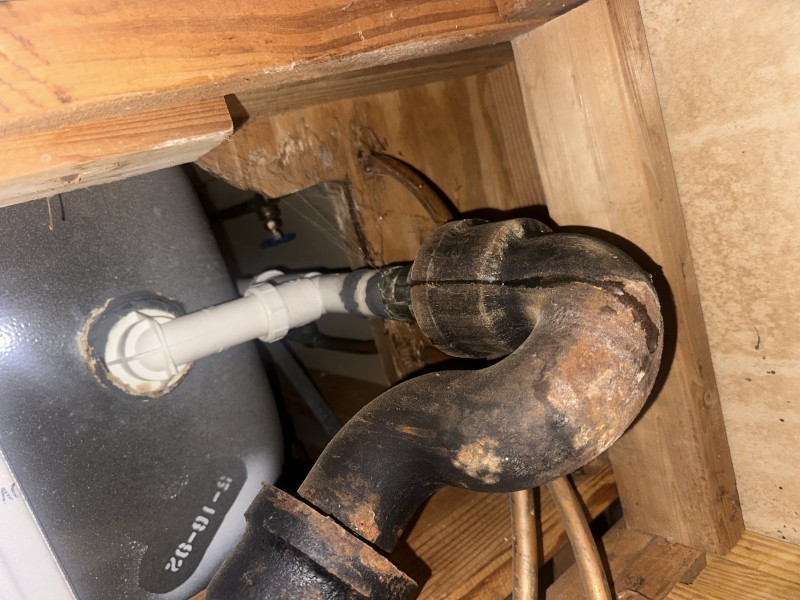
Ceiling Access & Leak Verification
I opened the ceiling to expose the tub waste and overflow and located the failing cast iron P-trap. Moisture tracing and visual inspection confirmed active seepage at a corroded hub—clear indicators that a PVC DWV replacement was necessary.
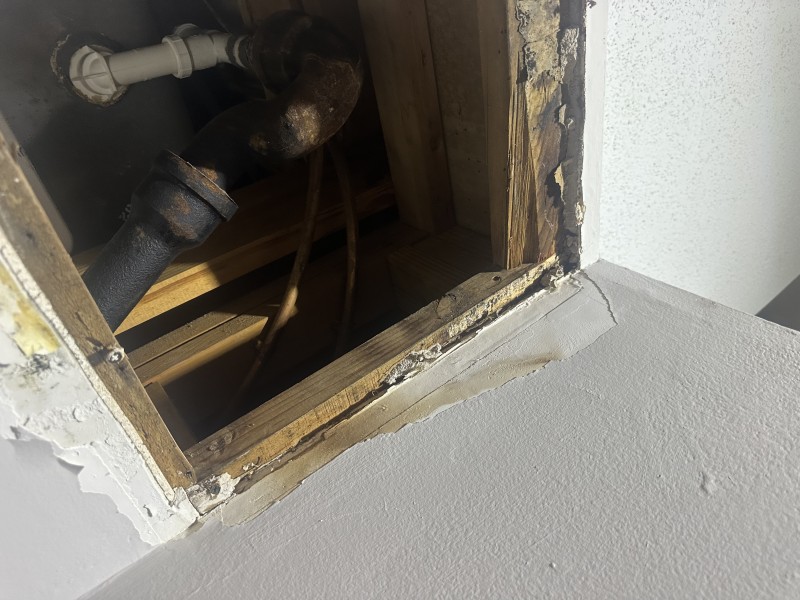
Cast Iron Removal
Using a reciprocating saw with a metal-cutting blade, I cut the brittle trap in sections. Careful bracing protected adjacent drain lines and the vented branch, minimizing vibration and preventing cracks during demolition.
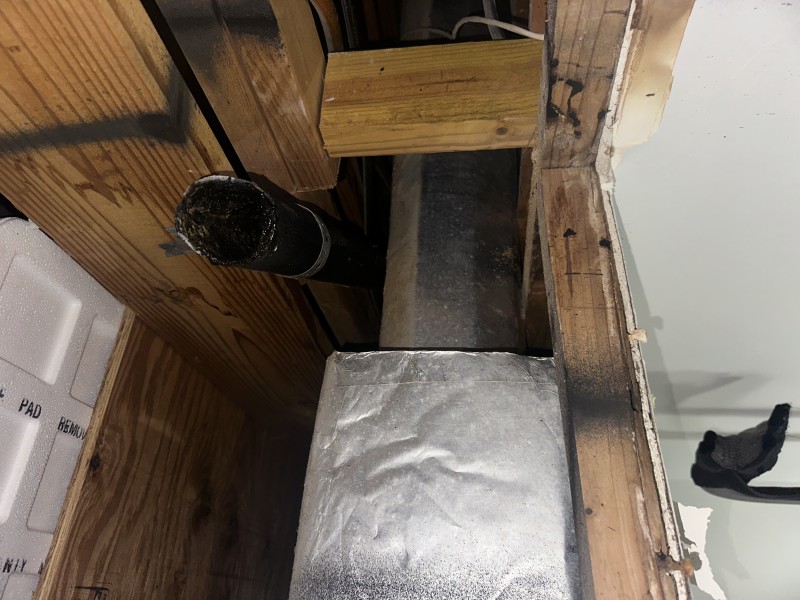
Drain Cleaning & Snaking
With the trap out, I ran a drain snake through the tub arm and waste line to clear gunk, hair, and soap residue. Restoring full-bore flow ensures the new P-trap performs correctly and prevents recurring slow drainage.
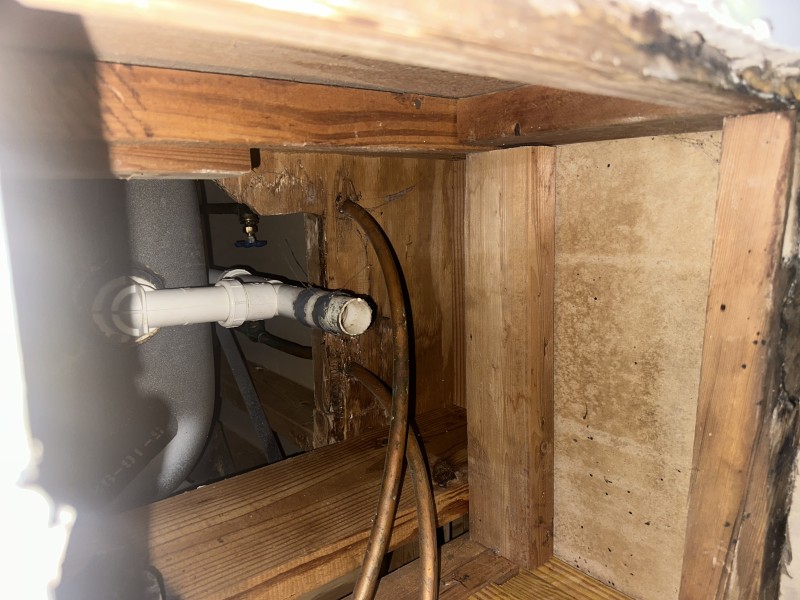
PVC Layout & Dry Fit
I dry-fit the PVC P-trap, slip-joint nuts, and fittings to the tub waste outlet, verifying slope to the main drain and clearances inside the joist bay. Proper alignment reduces turbulence, maintains trap seal, and supports quiet, efficient drainage.
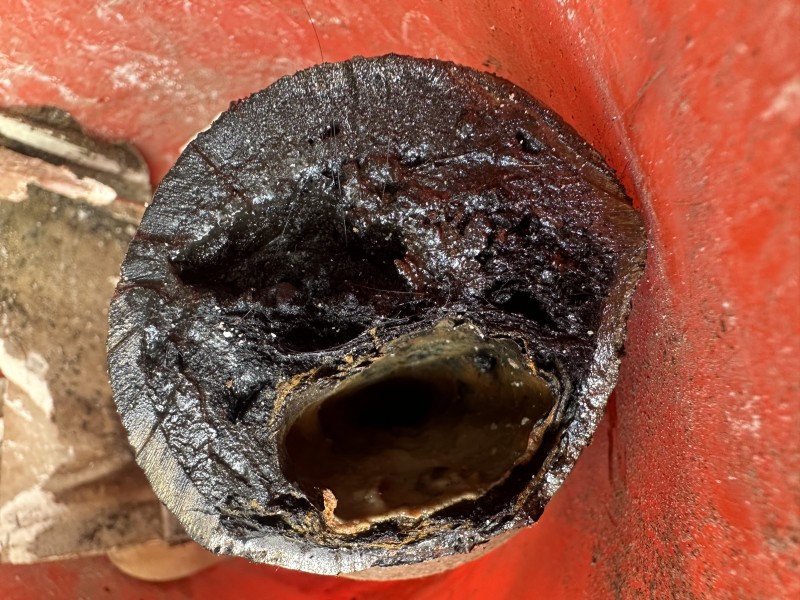
Solvent Weld & Assembly
After confirming fitment, I primed and solvent-welded the PVC components. Clean, full-depth glue joints and correct cure time create durable, code-compliant DWV connections that resist leaks and corrosion.
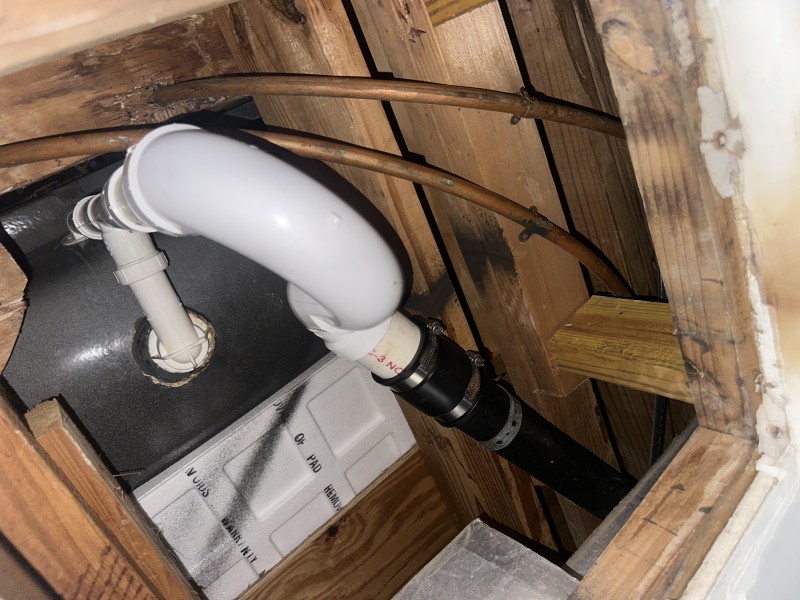
Final Test & Verification
I performed a full flow test and leak check at every joint. The bathtub now drains rapidly, the ceiling cavity is dry, and the new PVC trap and tub waste provide a long-term solution to the previous leak and slow drain.